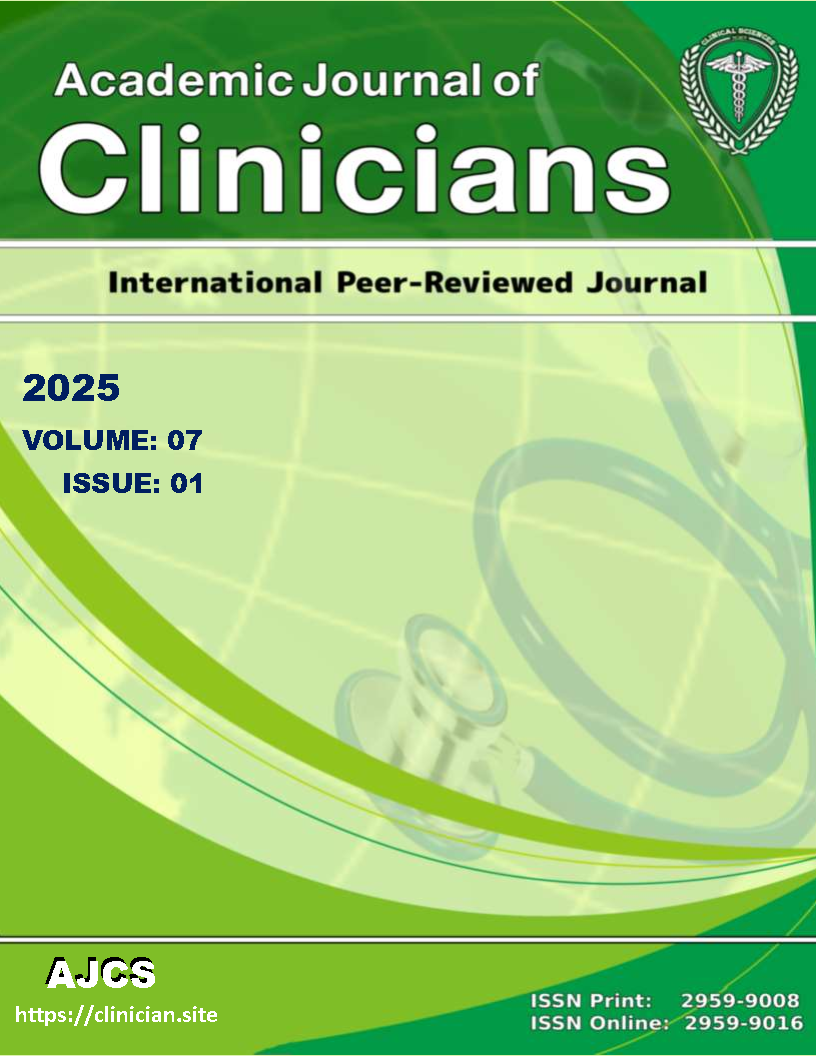Identification of the Epidemiological Characteristics of Chronic Fatigue Syndrome Among Tikrit University Students
Keywords:
Chronic Fatigue Syndrome, epidemiology, physical stressAbstract
Background: chronic fatigue syndrome ,defined as the condition in which the person have persistent fatigue accompanied by other specific symptoms for a minimum of six months not due to ongoing exertion not relieved by rest and not caused by other medical conditions.
Objectives: To find the frequency of Chronic Fatigue Syndrome and epidemiological characteristics among Tikrit University students, as well as identifying the relationship between chronic fatigue syndrome and history of physical and mental stress and history of smoking.
Subjects and Methods: A cross-sectional study has been conducted on 260 students on different colleges of Tikrit University/Iraq. The study spanned between January 1st to March 1st 2023. All the participants have been given a self- explanatory questionnaire related to chronic fatigue syndrome (CFS) diagnostic criteria.
Results: Chronic fatigue syndrome was found to be frequent among Tikrit University students with overall frequency of (33.8%). The females are more affected than males by this syndrome. About (42%) of persons with have history of physical stress and (9%) of them suffered from mental stress. Concerning the age of patients, it is found that frequency of Chronic Fatigue Syndrome increases in the age group of 18-20 years old. Although, most studies have not mentioned the relation between smoking and chronic fatigue syndrome, in this study Chronic Fatigue Syndrome among smokers show a frequency of (39.5%). Concerning the symptoms of this syndrome we found that fatigue and sleep disturbance were the major symptoms of frequency (100%) also poor memory account (70.4%) and photosensitivity (37.84%), (63.36%) have intestinal disturbance, (48.4%) have poor appetite, and (68.64%) have headache and this agree with previous studies. There was a variation between colleges in number of persons affected with Chronic fatigue syndrome most of them were from college of Literature (17%), college of Biology (13.6%), college of Medicine (12.5%), while the college of Pharmacy and Agriculture show the least frequency (4.5%).
Conclusion: There is a relatively high percentage (33.8%) of Tikrit University students with Chronic Fatigue Syndrome, which is more frequent in females. This syndrome is more frequent in the age group of (18-20) years old students. Half of those affected by this syndrome have a history of physical and/or mental stress.
Downloads
References
Nicholas AB, Nicki RC, walker BR. Davidson: principle and practice of medicine, 20th ed. Philadelphia: Elsevier inc, 2006: 250-252.
Holmes GP, Kaplan JE, Gantz NM, Komaroff AL, Schonberger LB, Straus SE, Jones JF, Dubois RE, Cunningham-Rundles C, Pahwa S, Tosato G. Chronic fatigue syndrome: a working case definition. Annals of internal medicine. 1988 Mar 1;108(3):387-9.
Afari N, Buchwald D. Chronic fatigue syndrome: a review. American Journal of Psychiatry. 2003 Feb 1;160(2):221-36.
Gallagher AM, Thomas JM, Hamilton WT, White PD. Incidence of fatigue symptoms and diagnosis presenting in UK primary care from 1990 - 2001. J R Soc Med 2004 March 97 (12) : 5-571.
William V. Bobo and William C. Hall. On Chronic Fatigue Syndrome, American Journal of Psychiatry 2004 ;161(6).
Hunt J. Towards a critical psychology of chronic fatigue syndrome: Biopsychosocial narratives and UK welfare reform. Journal of Critical Psychology, Counselling and Psychotherapy. 2022;22(1):18-28.
Cockshell SJ, Mathias JL, Cognitive functioning in chronic fatigue syndrome. Psychol Med 2010 January 40 (80) : 1-15.
Chambers D, Bagnall AM, Hempel S, Forbes C. Interventions for the treatment, management and rehabilitation of patients with chronic fatigue syndrome/myalgic encephalomyelitis: an updated systematic review. Journal of the Royal Society of Medicine. 2006 Oct;99(10):506-20.
Sheill G, Guinan EM, Peat N, Hussey J. Considerations for exercise prescription in patients with bone metastases: a comprehensive narrative review. PM&R. 2018 Aug 1;10(8):843-64.
Jackson, Melinda, Bruck, Dorothy. Sleep abnormality in chronic fatigue syndrome /Myalgic encephalomyelitis. J clin sleep Med 2012 Dec 8 (6): 719-728.
Gallagher AM, Thomas JM, Hamilton WT, White PD. Incidence of fatigue symptoms and diagnosis presenting in UK primary care from 1990 - 2001. J R Soc Med 2004 March 97 (12) : 5-571.
Franziska Sotzny, Julià Blanco, Enrica Capelli, Jesús Castro-Marrero, Sophie Steiner, Modra Murovska, Carmen Scheibenbogen. Myalgic Encephalomyelitis/Chronic Fatigue Syndrome – Evidence for an autoimmune disease, Autoimmunity Reviews 2018 Volume 17 (6): 601-609.
Liu T, Sun W, Guo S, Chen T, Zhu M, Yuan Z, Li B, Lu J, Shao Y, Qu Y, Sun Z. Research progress on pathogenesis of chronic fatigue syndrome and treatment of traditional Chinese and Western medicine. Autonomic Neuroscience. 2024 Jul 8:103198.
Andrew D. Bretherick, Simon J. McGrath, Andy Devereux-Cooke. Typing myalgic encephalomyelitis by infection at onset: A DecodeME study. NIHR Open Research 2024: 3:20.
CDC [Internet]. Myalgic Encephalomyelitis/Chronic Fatigue Syndrome. May 10, 2024. [Cited 2024 Nov 15]; Available from: https://www.cdc.gov/mecfs/about/index.
Leslie A. Aaron ; Dedra Buchwald, Tobacco Use and Chronic Fatigue Syndrome, Fibromyalgia, and Temporomandibular Disorder. Arch Intern Med. 2000;160(15):2393.
Baraniuk JN, Naranchk K, Maibachk H, Clauwk DJ. Tobacco Sensitivity in Chronic Fatigue Syndrome (CFS). Journal Of Chronic Fatigue Syndrome. 2000 Jan 1;7(2):33-52.





